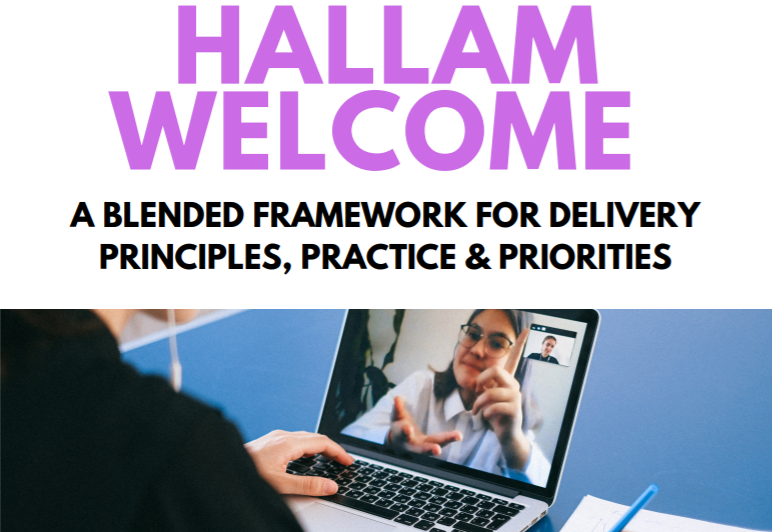The key aspect to the success of all teaching and learning is how well our students engage with it. The move to include more blended delivery requires a deliberate effort focused on keeping students in touch with their learning, with one another and with you. How are you going to welcome your students to the university and make sure they feel they belong? And how are you going to know if your efforts are working?
The following provides some guidance for supporting our students to make the most of their learning. There is also guidance for evaluating their engagement with and the impact of the teaching they have experienced. The guidance covers different moments in the student journey, and in the design and delivery process. It is mostly in the form of brief suggestions and reflective questions. Additional resources to develop these ideas will be added as they are developed.
The Hallam Welcome Framework
Hallam Welcome is a framework for delivering a minimum baseline student welcome experience for course leaders and academic colleagues. It focuses on academic and course delivery but highlights the importance of non-academic and social activities. It supports a one-university approach to welcome activities, ensuring consistency across the university whilst supporting flexibility within the delivery. The framework supports delivery across the student welcome journey, including pre-arrival, on arrival and welcome week and extended welcome activities. You can use it as a checklist or toolkit of ideas and tips for Course Leaders and includes links to useful information and resources. The framework is intended as a good practice guidance document and is supported by a Hallam Welcome SharePoint site where tools and resources for staff are available.
Planning and design of teaching and learning activities
This is a list of ideas to help you ensure students are involved in planning teaching activities and on demonstrating the quality of that student involvement.
- Create a narrative/rationale for why you are adopting each approach to learning and teaching. Use evidence from a range of stakeholders (e.g. your reflections as a teacher; literature on the use of this approach elsewhere; student feedback).
- Check that your planned activities are aligned with the learning outcomes of the module
- Set clear objectives for session(s). Objectives don’t always have to be based on learning gains in curriculum content/knowledge. Ask for student input on what they think they still need to learn.
- Consider measuring generic or online skills development (e.g. students will collaborate with peers in a break-out room and develop their problem-solving skills)
- Consider using measures before and after a session (e.g. a test for understanding of a topic, a question about how confident students are in their knowledge etc) to evaluate learning gain.
Questions to ask yourself to make sure there has been student engagement
- Have students and staff worked together to co-design any learning or assessment activities (have you done any of thing things listed above)? Have you shown current students how previous student feedback has been used as part of your rationale?
- Have students worked with staff to assess the success of the module design?
- Can students apply what they have learned to things that matter to them?
- Have students been encouraged to take risks and to see failure as a route to learning? Have there been failures in the module design that offer an opportunity for improvement?
Evaluation of student engagement in teaching
Evaluating your teaching and student learning is an important part of being a lecturer as it allows you to understand how to adapt and improve your practice. There are some key methods that can be done before, during and after a teaching activity or series of activities to evaluate student engagement, student learning and your teaching.

